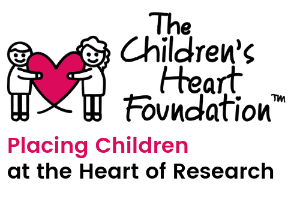
With the help of our generous supporters, The Children's Heart Foundation has funded nearly $18 million of CHD research and scientific collaborations.
View all of our funded research below. Use the search tool to filter by Doctor's Name, Project Name, Hospital/Institution, or Year funded.
"Predicting Long-Term Heart and Pulmonary Artery Growth in Congenital Heart Disease"
Colleen Witzenburg, PhD, MS
University of Wisconsin, Madison
Wisconsin
2019
Collaboratively funded through The Children's Heart Foundation and American Heart Association's Congenital Heart Defect Research Awards.
"A congenital heart defect results when the heart, or blood vessels near the heart, do not develop normally before birth. CHDs are the most common type of birth defect with an incidence in the U.S. of 1 in every 100 babies. Over the past 40 years, enormous advances in surgical techniques have revolutionized outcomes such that even babies with the most severe defects survive. The success in reducing infant mortality, however, has led to an increasing number of children with CHDs. In this new era, care is particularly challenging because 1) the anatomy and physiology of the heart, blood vessels, and their connections in each child are complex and unique and 2) these children are growing so the effects of a particular surgery on heart and vessel function and size are constantly evolving. Unfortunately, no methods currently exist to predict how an individual child¿s heart and vessels will grow before a surgical repair, or how a given repair will alter that growth. Instead, physicians rely on experience and intuition, and often struggle to decide not just what operations to perform for each patient but also when to perform them. Computer models could be powerful tools for predictive and personalized medicine in this cohort. Computational models are commonly used to predict the blood flow and pressure resulting from different surgical approaches in CHD patients, yet even the best of these predictions applies only the day surgery is performed. Thus, there is clearly an unmet need to develop tools that predict the long-term implications of different approaches in an individual patient. Recently bioengineers have developed the mathematical framework to simulate growth and remodeling. In 2018, we used this framework within a computational model to accurately predict changes in left ventricular thickness and size weeks and months following valve dysfunction, hypertension, and heart attack in adult dogs. These predictions required just six minutes to run on a desktop computer, suggesting this model has great potential for clinical development because a clinician could explore multiple options the same day they image a child. We propose expanding and adapting this model to predict the long-term changes in the shape and size of the heart and vessels of children with CHDs. Specifically, we will predict the long-term risks and benefits of surgical timing in individual children to increase the quantity and quality of their childhood years."



